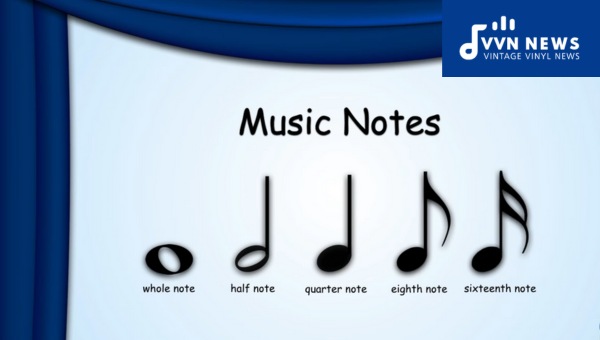Music notes serve as the alphabet of the audio world, giving shape and clarity to the melodies that resonate throughout our lives.
Whether you’re a budding musician eager to understand the language of your favorite songs or simply a music enthusiast looking to deepen your appreciation, grasping the basics of musical notation is key.
As we unravel the mysteries behind those little black dots and lines on the staff, you’ll discover how they work together to guide artists in creating harmonies that tug at our heartstrings and rhythms that compel us to dance.
In this exploration of music notes, I hope to illuminate the path for anyone who has felt intrigued by sheet music but perplexed by its cryptic symbols.
By unlocking these symbols’ meanings, you empower yourself not only with theoretical knowledge but also with an innate sense of musicality that can enrich your listening and playing experiences.
Join me as we step into a world where every sharp, flat, and clef unveils a new aspect of musical storytelling.
What Are Music Notes and Their Significance?
Music notes are symbols that represent a sound’s pitch and duration in musical notation.
They are the building blocks of music, allowing composers to transcribe melodies, harmonies, and rhythms onto paper — a form of communication that musicians across the globe can understand and interpret.
At their core, music notes give us critical information:
- Pitch: Notes tell us which note to play on our chosen instrument or to sing. Each one corresponds to a specific frequency of sound.
- Duration: Notes illustrate how long a sound should be held. This brings the rhythm to life.
The significance of music notes lies in their ability to preserve musical ideas. Without them, it would be nearly impossible to pass down the complex works of classical composers like Mozart or Beethoven.
Furthermore, they provide a universal language — an Italian notation system that transcends spoken language barriers.
Music creates an emotional connection between composer, performer, and listener.
Through music notes, this emotional power is encoded into something tangible — transforming abstract ideas into a format that can be shared across time and space.
It’s remarkable how these small symbols carry the entire weight of our musical heritage.
Types of Music Notes
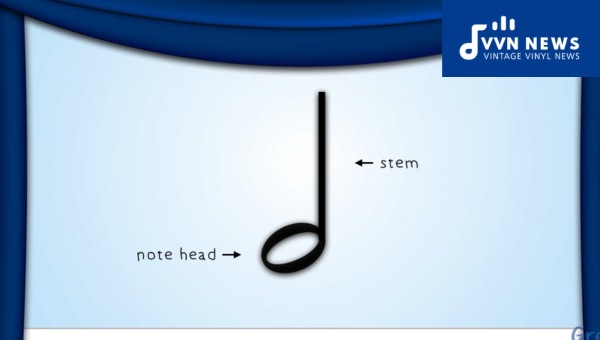
Music notes, the small yet mighty symbols on a staff, are the very essence of sheet music.
It’s through these varied notes that musicians can translate written compositions into audible wonder.
Let’s delve into the diverse types of music notes and their distinctive roles.
Whole Note
At the forefront lies the whole note, which is an open circle without any stems or flags. Its purpose? To hold a tone for four beats in 4/4 time – it embodies the full measure of sound in common time signatures.
Half Note
Venture half the distance with the half note presented as an open circle with a stem.
Lasting two beats, this note plays a pivotal role by offering rhythmical balance, acting as either a sustained sound within faster tempos or dictating the march at slower paces.
Quarter Note
The quarter note, marked by a filled-in circle and stemmed, matches each beat within standard 4/4 timing – its appearance is common and essential.
As the building block of rhythmic patterns, it propels melodies forward with precision.
Eighth Note & Sixteenth Note
Diving further into brisker nuances, eighth and sixteenth notes bring cadence and texture to compositions.
An eighth note reveals one flag or joins another through horizontal beams—demanding just half a beat for its voice to be heard—while two flags or double beams identify each sixteenth note as it swiftly speaks within a quarter beat’s span.
Combining these fundamental forms creates rhythmic complexity, a mosaic that can range from slow and stately waltzes to rapid-fire jazz improvisations.
Each type serves its purpose; their durations blend into a harmonious dialogue or create an energetic repartee, all under the conductor’s baton, which is timing within the music.
Also Read: A Music Note [Demystifying The Language Of Musical Notation]
Understanding the Staff and Clefs
At the heart of written music lies the staff—a set of five horizontal lines and four spaces that represent different musical pitches.
Each line and space corresponds to a specific note, which is determined by the clef at the beginning of the staff.
The Staff
Music is notated on a staff, a core component for visualizing notes. It technically serves as the canvas where composers paint their musical ideas.
The Clefs
The clef is crucial as it sets the stage for note identification. There are primarily two clefs in use:
- Treble Clef (G Clef): It spirals around the second line from the bottom of the staff, indicating that this line represents the note ‘G’ above the middle ‘C’. This clef is commonly used for higher-pitched instruments like violin and flute.
- Bass Clef (F Clef): Its two dots flank the fourth line from the bottom of the staff, signifying this line as ‘F’ below the middle ‘C.’ Instruments such as tuba and cello typically utilize this clef.
By understanding these key elements, you’re equipped to decode notes with confidence.
The Connection Between Notes and Pitch
The relationship between notes and pitch is fundamental in music. Each note represents a specific pitch, the highness or lowness of a sound, which corresponds to the frequency of vibrations.
For instance, when we see the note “A” on the staff, it vibrates at 440 Hz – this is known as concert pitch and serves as a tuning standard.
Frequency: The Scientific Backbone
Pitch is determined by the frequency of waves that reach our ears. Technically speaking:
- Higher frequency = Higher pitch
- Lower frequency = Lower pitch
Musical notes act like bookmarks for these frequencies, indicating exactly where a musician should place their fingers or how much air to blow to achieve the desired sound.
Notation: The Map of Pitch
On written music, the vertical position of a note on the staff indicates its pitch:
| Staff Position | Note Name | Associated Pitch |
|---|---|---|
| Top | E | High |
| Bottom | F | Low |
Octaves: A Harmonious Duplication
Pitch can be replicated across various octaves while retaining its musical identity.
An “A” note played at different octaves will sound distinct but harmoniously related due to the octave scale’s mathematical consistency.
Explore through sheet music or instruments like pianos; you will notice how pitches are organized sequentially – this sequence forms scales that are fundamental to constructing melodies and harmonies.
Also Read: 12 Tips To Improve Your Low Notes On The Flute [Easy Strategies To Learn]
What Are the Different Durations of Music Notes?
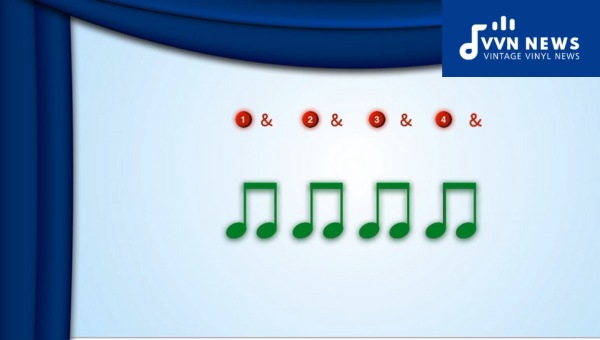
When discussing music notes, duration refers to how long each note is held.
This aspect of music is just as critical as pitch; it dictates the rhythm and pace of a piece, transforming notes into a lively melody or a soulful tune.
Whole Notes and Rests
At the foundation of musical durations, we have the whole note, represented by an open circle with no stem. It’s typically held for four beats in common time (4/4). Conversely, a whole rest corresponds to the same length of silence.
Half Notes and Rests
A step down from whole notes are half notes, shown with an open circle and a stem. These are held for two beats each, while a half rest denotes two beats of silence.
Quarter Notes and Rests
Quarter notes, marked by filled-in circles with stems, are fundamental to most rhythms, lasting one beat per note in 4/4 time. The corresponding rest—called a quarter rest—signifies one beat of silence.
Eighth Notes and Rests
Here we introduce eighth notes, which halve the duration once more; they’re denoted by filled-in circles with stems and one flag or beam when connected. An eighth rest indicates half a beat of silence.
Sixteenth Notes and Rests
Moving further into the subdivision, sixteenth notes feature two flags or beams and are played for just a quarter-beat in standard time. Sixteenth rests mirror this minute duration but with silence.
By understanding how each type of music note functions within a piece’s rhythm, you can start interpreting musical scores or even composing your own melodies.
Also Read: D Flat Music Note [Cracking The Code Of Musical Notation]
How Do Dynamics and Articulations Affect Music Notes?
Dynamics and articulations serve as the expressive tools that breathe life into music notes.
Dynamics dictate the volume of the music, creating an auditory landscape that ranges from whisper-soft pianissimo (pp) to thunderous fortissimo (ff).
These subtle shifts in loudness can dramatically alter the emotional impact of a piece.
Meanwhile, articulations determine how a note is played, lending nuance and texture. For instance:
- A staccato (•) note is played sharply and detached, adding a sense of urgency.
- Legato (—) notes, in contrast, flow smoothly together, weaving a tapestry of unbroken sound.
- Accents (>) emphasize a note, commanding listeners’ attention.
Changing the artistry with which notes are delivered can completely transform a simple melody into a compelling narrative. By understanding dynamics and articulations, you’re equipped to read between the lines of sheet music and grasp the composer’s true intent.
Understanding Accidentals In Music
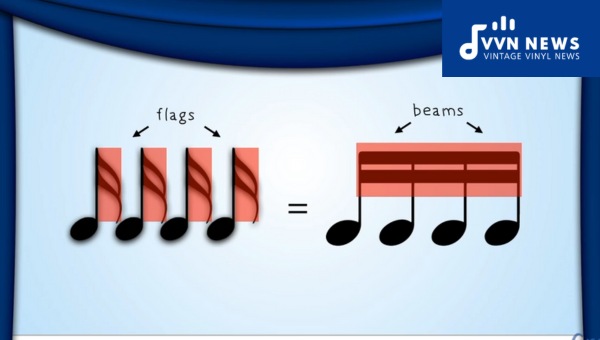
In the realm of written music, accidentals are essential elements that indicate the modification of a note’s pitch.
Accidentals are symbols placed directly to the left of a notehead, altering the note’s pitch to be a half step higher or lower. The most common accidentals you will encounter include:
- Sharps (♯): Raise a note by a half step.
- Flats (♭): Lower a note by a half step.
- Naturals (♮): Cancel out any previous sharps or flats and return the note to its original pitch.
When an accidental appears, it affects not only the note it directly precedes but also all subsequent notes on that line or space for the remainder of the measure in which it is found.
Understanding how accidentals change the pitch of notes is crucial when trying to play or comprehend a piece of music accurately.
Beaming In Music
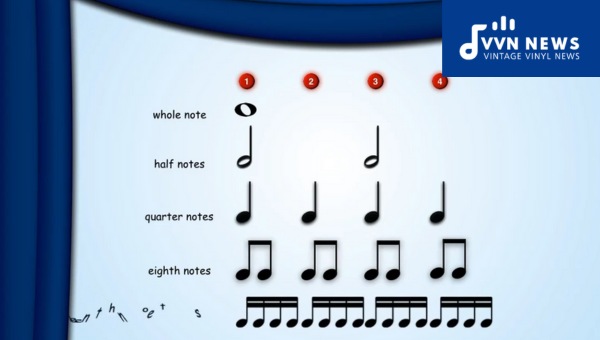
Beaming refers to connecting multiple eighth notes, sixteenth notes, and other subdivided notes with a horizontal line or lines—known as beams—to clarify rhythm and improve readability.
These beams help group smaller notes together in patterns that reflect the underlying pulse or beat structure. Here’s how beams are used:
- Notes beamed together usually fall within one beat or one subdivision of a beat.
- The number of beams connecting notes indicates the speed or duration: eighth notes have one beam, sixteenth notes have two beams, and so forth.
Beaming ensures that musicians can quickly interpret complex rhythms and play them seamlessly while keeping visual clutter on sheet music to a minimum.
In essence, beams make reading music more efficient and performance more fluid.
By familiarizing yourself with both accidentals and beaming in music, you will enhance your ability to read and perform with nuance and precision—two attributes every musician strives to cultivate throughout their journey in mastering musical language.
What Is the Role of Music Notes in Various Genres?
Music is a universal language, transcending borders and touching hearts regardless of one’s cultural background.
At the core of this language are music notes, which play an indispensable role across various genres.
Whether it’s the soulful strains of a blues scale, the driving beat of a rock anthem, or the complex harmonies of classical pieces, music notes are the building blocks that create these diverse soundscapes.
Also Read: B Flat Music Note [The Basics Of Musical Notation]
The Backbone of Classical Composition
In classical music, notes are meticulously written to convey every nuance intended by the composer.
It is through these notations that orchestras can synchronize their instruments to perform symphonies that have enchanted audiences for centuries.
Tempo markings guide musicians on how quickly or slowly passages should be played, while dynamics ensure that the expressive swells and delicate subtleties are executed with precision.
Jazz Improvisation and Flexible Notation
Moving into jazz, we note a shift from strict adherence to flexibility within structure.
Jazz musicians often use notes as a framework for improvisation; while they might play off written melodies and chord progressions represented by lead sheets, personal interpretation, and spontaneous creation play integral roles.
Here’s an example of lead sheet notation which typically includes just enough information for jazz artists to express themselves freely within set harmonic boundaries.
Rock and Pop’s Emphasis on Rhythm
Rock and pop genres place a heavy emphasis on rhythm, often built around repeated note patterns called riffs.
These riffs become central themes defining songs and typically feature bold accents–a prime example being the iconic guitar riff from Deep Purple’s “Smoke on the Water”.
Power chords – notated but often learned by ear – dominate this musical landscape.
Country Music Storytelling
In country music, chords and melodies outlined by music notes serve as a vessel for storytelling.
Lyrics take precedence here, with guitar chord diagrams often accompanying simple melodies in written form — whether you’re reading classic country tabs or modern Nashville-style charts.
Electronic Music Production
Lastly, in electronic genres such as EDM or techno, you might think that traditional notation takes a backseat due to computer-based production methods; yet it continues to provide templates for digital instrument programming.
MIDI (Musical Instrument Digital Interface) utilizes traditional note values, allowing producers to sequence their electronic compositions visually.
In every genre imaginable – from reggaeton to reggae, hip-hop to heavy metal – music notes remain fundamental tools that embody rhythm, harmony, melody, and emotional expression.
Their application may differ wildly between styles, but their importance is consistently pivotal in crafting the auditory art form we call music.
Also Read: G Music Note [Understanding The Basics Of Musical Notation]
FAQ: Delving Into The World Of Music Notes
What exactly are music notes?
Music notes are symbols that denote the pitch and duration of a sound in musical notation, essentially instructing musicians on what to play and for how long.
Can you explain a clef in simple terms?
A clef is a symbol at the beginning of the staff that indicates the pitch range of the music, with the most common types being treble and bass clefs.
What’s the difference between a flat and a sharp note?
A flat (♭) lowers a note by a half-step, while a sharp (♯) raises a note by a half-step from its original pitch.
How does rhythm relate to music notes?
Rhythm is dictated by the duration and pattern of notes and rests within a piece of music, creating the “beat” or “tempo.”
Do I need to learn to read music notes to play an instrument?
While not strictly necessary, reading music notes can greatly enhance your ability to understand and perform music across various instruments.
Conclusion
In wrapping up our journey through the landscape of music notes, we’ve unpacked the essentials that form the backbone of musical composition and performance.
Music notes are more than just marks on a page; they are the language through which emotions and stories unfold in melody.
Their variety in pitch, duration, and dynamics shape not just a single piece but the entire spectrum of what we call music.
